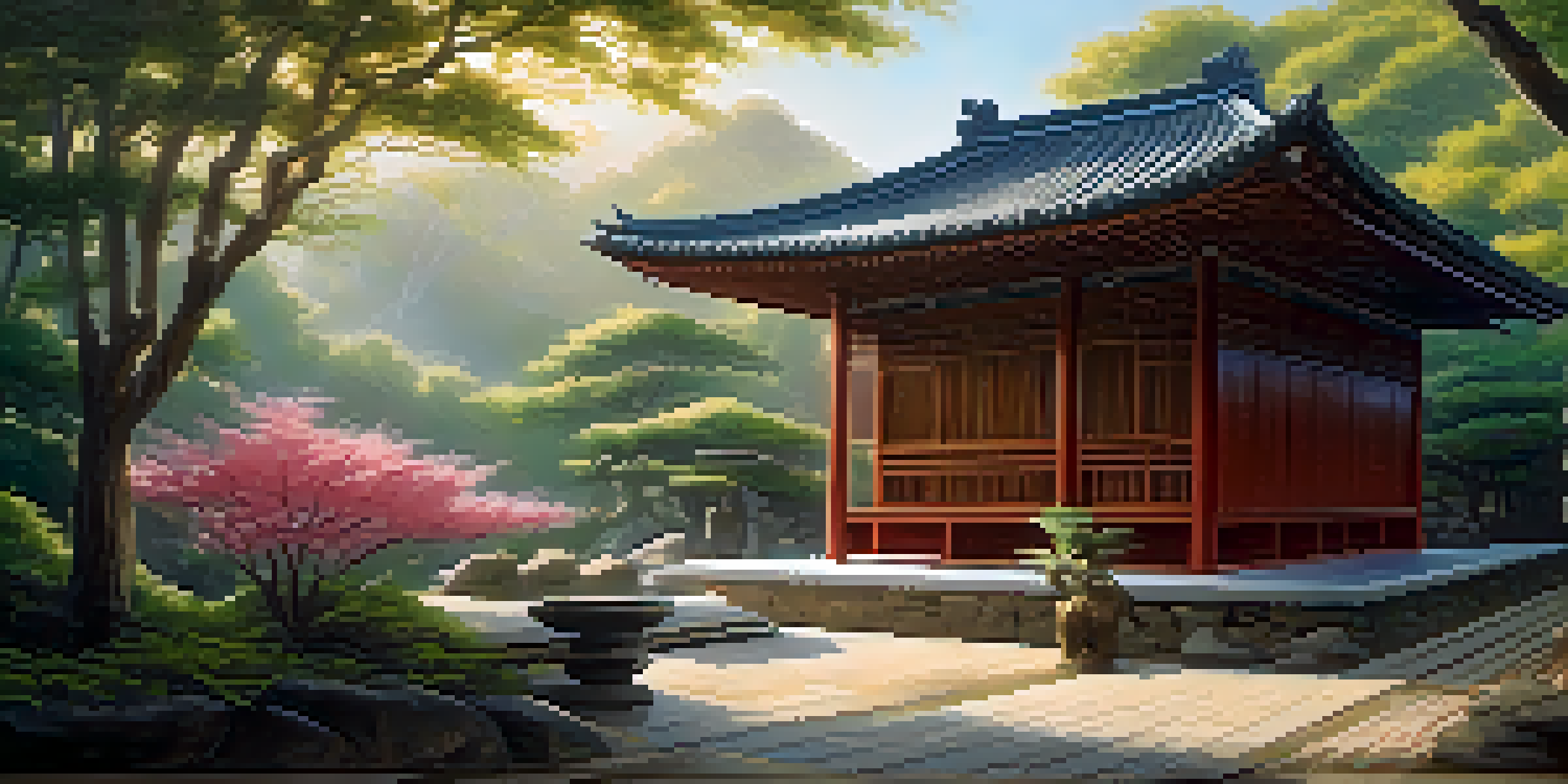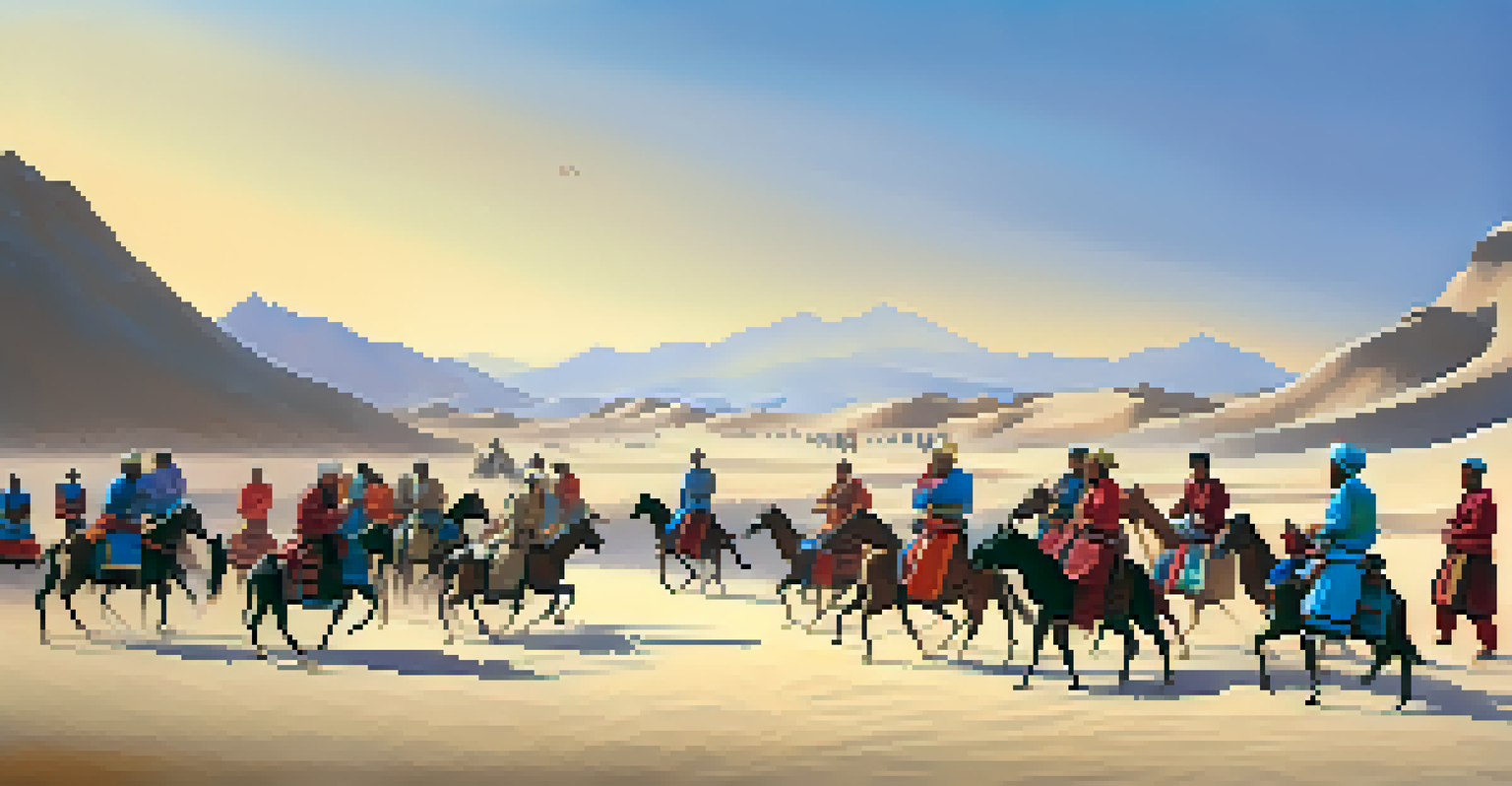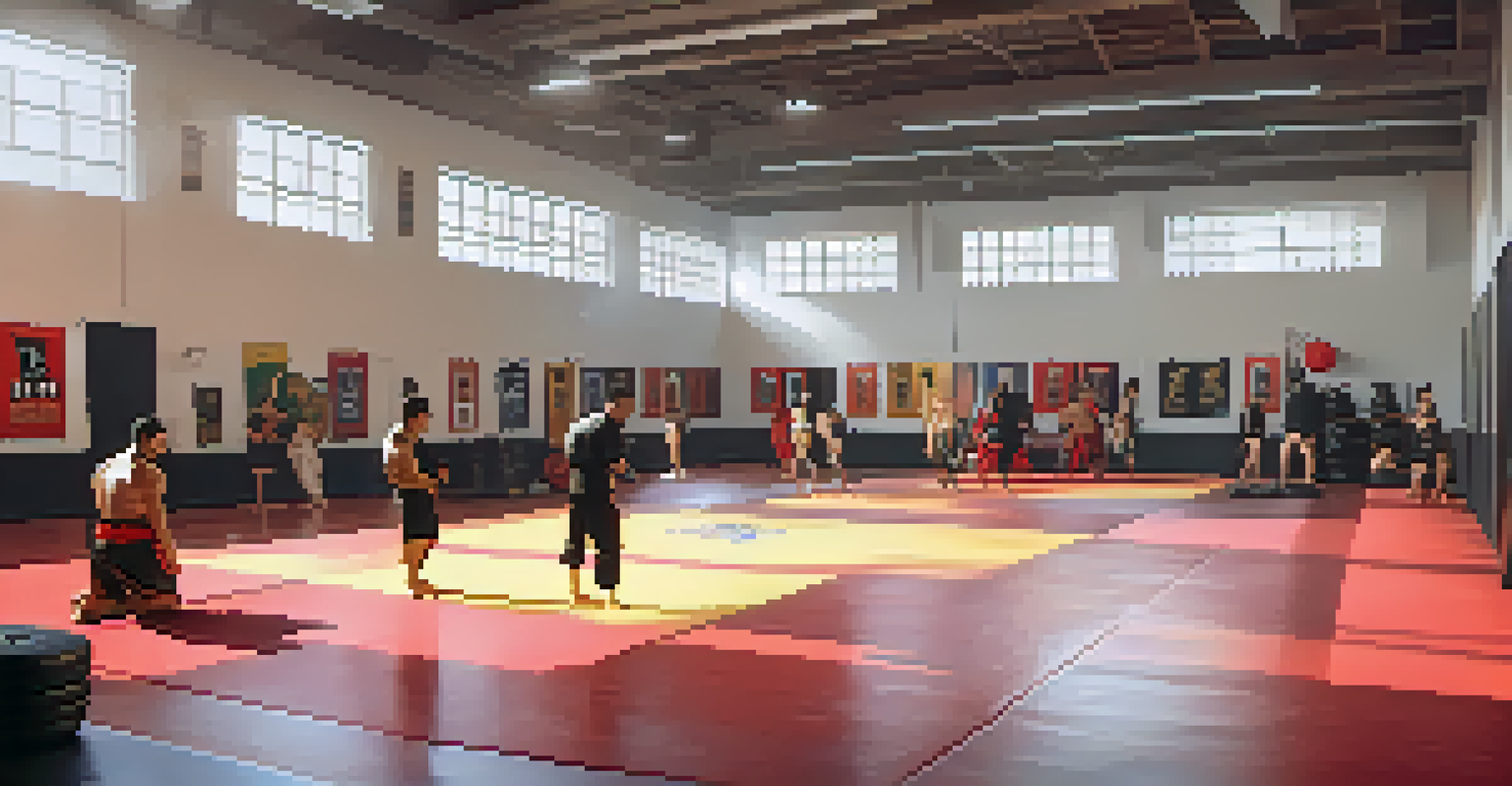The Evolution of Martial Arts Through Global Exchange

Ancient Roots: The Birth of Martial Arts
Martial arts began thousands of years ago, rooted in self-defense techniques developed in various ancient cultures. From the Chinese martial arts of Kung Fu to the Greek Pankration, these early forms were not just about fighting; they encompassed philosophy, discipline, and cultural identity. As societies evolved, so did these practices, which became integral to training warriors and instilling values.
Martial arts are ultimately about the journey of self-discovery and respect for one’s roots, while evolving with the times.
Each culture contributed unique styles and principles, often influenced by their social structures and historical needs. For instance, the samurai of Japan practiced techniques that emphasized honor and loyalty, while in India, Kalaripayattu integrated spirituality with physical combat. These distinctions formed the foundation for what would later emerge as diverse martial arts systems around the world.
As these ancient techniques spread through trade routes and conquests, they began to blend, creating new styles that reflected the fusion of cultures. This early global exchange set the stage for martial arts to develop into a rich tapestry of techniques that would continue to evolve over time.
The Silk Road: A Pathway for Cultural Exchange
The Silk Road was more than just a trade route; it was a vital artery for cultural exchange, including martial arts. As merchants and travelers moved between East and West, they shared not only goods but also techniques and philosophies behind martial practices. This interaction led to mutual influences, enriching local traditions and expanding the understanding of combat.

For example, the introduction of Chinese martial arts to Central Asia and beyond led to the adaptation of techniques in local fighting styles. Similarly, elements of Persian wrestling influenced the development of various grappling arts across the regions. The exchange fostered a spirit of innovation, allowing martial arts to adapt and incorporate diverse methodologies.
Martial Arts Evolve Through Cultures
Martial arts have developed over centuries, influenced by the unique philosophies, techniques, and cultural identities of various societies.
The cross-pollination of ideas during this period illustrated how interconnected the world was, even in ancient times. As techniques spread, they also absorbed the cultural nuances of each region, creating a dynamic evolution that continues to this day.
Colonialism's Impact on Martial Arts Evolution
Colonialism had a profound effect on martial arts, often leading to the suppression of indigenous practices while simultaneously introducing new fighting styles. Colonizers would often ban traditional martial arts as part of broader efforts to control local populations, pushing these practices underground. However, this repression sometimes sparked a revival, as communities sought to preserve their heritage.
The beauty of martial arts lies in its ability to adapt and blend, creating a unique tapestry of culture and technique.
In regions like Southeast Asia, local martial arts faced challenges from colonial powers, which often favored Western forms of combat. Yet, this struggle also led to the emergence of hybrid styles that blended traditional techniques with new influences. For instance, the Filipino martial art of Arnis developed in response to both foreign occupation and the need for effective self-defense.
As martial arts adapted to these pressures, they found new expressions and forms of resilience. The evolution during this period illustrates the powerful connection between culture, identity, and the art of combat, showing that martial arts are as much about social dynamics as they are about physical techniques.
Post-War Globalization and Martial Arts Popularity
The aftermath of World War II marked a significant shift in the global landscape, leading to increased interest in martial arts worldwide. With soldiers returning home from the Pacific Theater, many brought back knowledge of Japanese and Asian martial arts. This sparked a fascination that transcended borders, leading to the establishment of dojos and schools across Europe and the Americas.
Television and cinema played pivotal roles in popularizing martial arts during this era. Iconic figures like Bruce Lee and Jackie Chan captivated audiences, showcasing the beauty and effectiveness of martial arts on screen. Their influence brought a new appreciation for these practices, transforming them into a global phenomenon that attracted countless enthusiasts.
Globalization Fuels Martial Arts Growth
The aftermath of World War II and the rise of media icons helped popularize martial arts globally, fostering a diverse community of practitioners.
As martial arts gained popularity, they also became a means of cultural exchange, with practitioners from different backgrounds coming together. This openness allowed for the sharing of techniques and philosophies, further enriching martial arts as a dynamic and evolving practice.
Modern-Day Fusion: Blending Styles and Techniques
Today, martial arts are more diverse than ever, with practitioners often blending techniques from various styles to create unique hybrid forms. This trend is particularly evident in mixed martial arts (MMA), where fighters draw from disciplines like Brazilian Jiu-Jitsu, Muay Thai, and wrestling. This fusion reflects a broader acceptance of different martial arts, showcasing the adaptability and evolution of combat techniques.
The internet has also played a crucial role in this modern exchange, allowing practitioners to learn from masters worldwide through online tutorials and forums. This accessibility has democratized martial arts training, enabling people from all walks of life to engage with multiple styles and philosophies. As a result, the global martial arts community has become more interconnected, sharing knowledge and techniques like never before.
This blending of styles not only enhances individual skills but also fosters a sense of unity among martial artists. The shared passion for learning and improvement transcends cultural boundaries, proving that martial arts are a universal language that connects people across the globe.
Martial Arts as Cultural Identity and Expression
For many practitioners, martial arts represent more than just a means of self-defense; they are a form of cultural identity and personal expression. Each style carries its own history, philosophy, and set of values that resonate with its practitioners. For instance, Capoeira, a Brazilian martial art, is deeply intertwined with African heritage and music, showcasing the vibrant culture from which it emerged.
This connection to culture often fuels a desire to preserve traditional practices while also allowing for innovation. Many martial artists strive to honor the roots of their art while adapting it to contemporary contexts. This balance between preservation and evolution highlights the dynamic nature of martial arts as both a cultural artifact and a living practice.
Technology Shapes Future Training
Advancements in technology, including virtual reality, are set to revolutionize martial arts training and accessibility, while emphasizing the importance of cultural roots.
Ultimately, martial arts serve as a powerful medium for storytelling, allowing individuals to connect with their heritage and share it with others. This cultural expression fosters a sense of community among practitioners, creating spaces where traditions can thrive while embracing new influences.
The Future of Martial Arts: Globalization and Technology
As we look to the future, globalization and technology promise to further shape the evolution of martial arts. With advancements in communication, practitioners can connect with experts and enthusiasts worldwide, sharing knowledge and experiences in real-time. This instant access to information can lead to rapid innovation and the emergence of new styles that reflect our increasingly interconnected world.
Virtual reality and augmented reality technologies are also beginning to play a role in martial arts training. These tools offer immersive experiences that can enhance learning, allowing practitioners to visualize techniques and practice in simulated environments. This technological integration could revolutionize how martial arts are taught and experienced, making them more accessible to a broader audience.

However, as martial arts continue to evolve, it is essential to remember the cultural roots and philosophies that underpin these practices. Balancing innovation with respect for tradition will be key to ensuring that martial arts remain a meaningful form of expression and community in the face of rapid change.